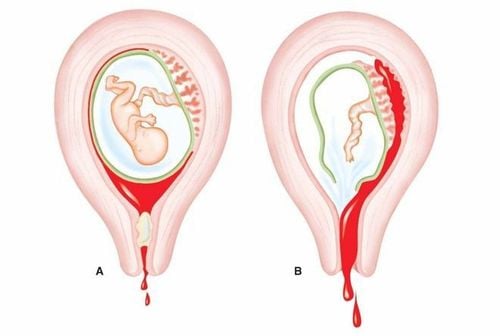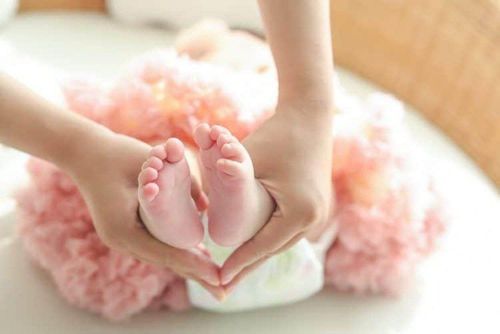This is an automatically translated article.
The article was written by Doctor of Obstetrics and Gynecology - Vinmec Times City International General HospitalEvery woman goes through labor differently. It is difficult to predict how and how long a woman's labor will take place. But there are many things you can do to prepare yourself for safe labor. Here is the progress of labor
1. Three main stages of labor Stage 1: The dilation of the cervix (womb). It also includes a latent phase transitioning to an active phase when faster, stronger uterine contractions promote cervical dilation. Stage 2: When pushing for the baby to be born. Stage 3: It is when vegetables come out.
Trắc nghiệm: Dấu hiệu cảnh báo chuyển dạ thực sự
Chuyển dạ là quá trình thai phụ bước vào giai đoạn “đẻ đau” để kết thúc thời gian “mang nặng”. Thời gian và dấu hiệu chuyển dạ sẽ khác nhau tùy vào vào từng người và nhiều yếu tố. Theo dõi bài trắc nghiệm dưới đây sẽ giúp bạn hiểu rõ hơn các dấu hiệu chuyển dạ một cách chính xác và an toàn.2. What happens in the early stages of labor? During pregnancy, your cervix is closed and contains mucus to prevent infection from entering the uterus. Before labor begins, the cervix changes, it is anterior, softer and shorter for actual labor. When you go into labor, the effect of uterine contractions causes the uterine muscles to contract. and then dilate with each contraction so that the cervix is opened to let the baby out. During the latent phase of the first stage, the cervix may open slowly, so it seems to change little . In this phase, the progression is slow, so the contractions are short and the interval between contractions is longer. It even rests for a while and then resumes. When entering the action phase of stage one, contractions are longer, faster, and stronger. Towards the end of the first stage of labor you can feel labor progressing rapidly. This phase is the transition phase for the cervix to fully open up to 10 cm. If it is a baby, the cervix will soften and shorten, then dilate and open. If there is labor, the tendency to happen at the same time means labor will be shorter.

3. What happens in the second stage of labor? This is the period when the baby is born. In the second stage of labor, the baby will enter the vagina (birth canal) and you will push the baby out to meet for the first time outside the uterus.
You will feel the pressure of the baby's head against the pelvis and with each contraction you feel more pressure, the feeling of straining increases. Listen to your body respond to the urge to push. Take a few breaths in between pushing to help you relax.
The baby will go deeper into the pelvis with each push, but at the end of each contraction, the baby usually pulls back a little, which is also normal to give the perineal muscles time to relax. Just like that, the baby keeps moving and you're almost to the finish line.
When you see the baby's head in the vagina after each contraction, the baby wants to come out.
The midwife will tell you when she sees the baby's head, and can teach you how to push or teach you how to control the push to help the baby relax so that the baby is born gently and slowly.
Using this method helps protect your perineum (the area between the vulva and anus). You may feel a burning or burning sensation as your vagina expands around your baby's head. The midwife may use warm compresses to support the perineum to prevent natural tearing as it is stretched and stretched.
When the baby is born, the baby will be placed on the mother's belly and dried with a clean towel, then placed directly skin-to-skin on the mother's chest.

4. What happens in the third stage of labor? Stage three begins when your baby is born and ends when the placenta comes out and your uterus is empty, so it will shrink shortly after birth.
Contractions will also be noticed but weaker than at first. The placenta detaches from the wall of the uterus and moves down into the vagina. You will feel a strain to push the placenta out.
As a rule, you will be given an injection to help the uterus contract again and completely remove the placenta. You don't need to do anything, as when it comes off the midwife will remove the placenta and membranes to check the integrity of the placenta and membranes.
Whether your third stage is spontaneous or managed, you are welcome to wait a few minutes to clamp the umbilical cord, which has many benefits for your baby.
Finally, you can hold your baby and watch him in your arms to feel better about your baby in real life with an endless happiness of being a mother.
Not every woman knows what the stages of labor are like, even for mothers who have given birth before. With the desire to bring the most special and preferential care to mothers and babies, Vinmec General Hospital has a maternity package package, pregnant mothers have a team of qualified and experienced doctors and nurses. The experimenter will advise, monitor and take care during pregnancy until delivery. And even after giving birth, mother and baby will rest and relax in a comfortable hospital room with dedicated and professional care.
If there is a need for consultation and examination at the Hospitals of the National Health System, please book an appointment on the website to be served.
Please dial HOTLINE for more information or register for an appointment HERE. Download MyVinmec app to make appointments faster and to manage your bookings easily.













